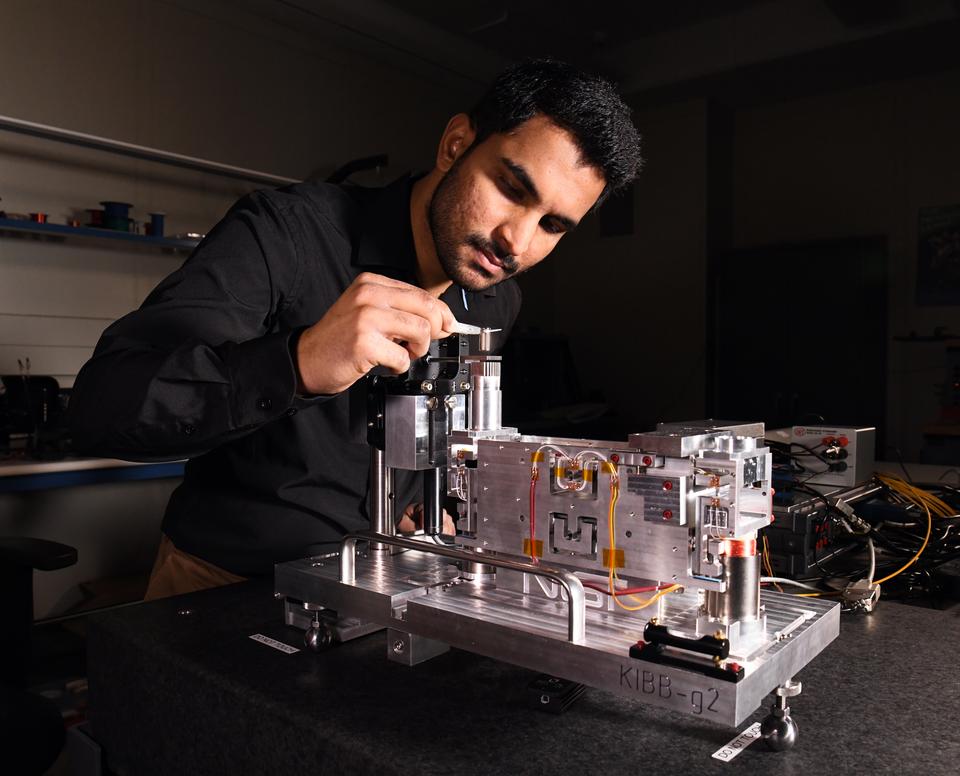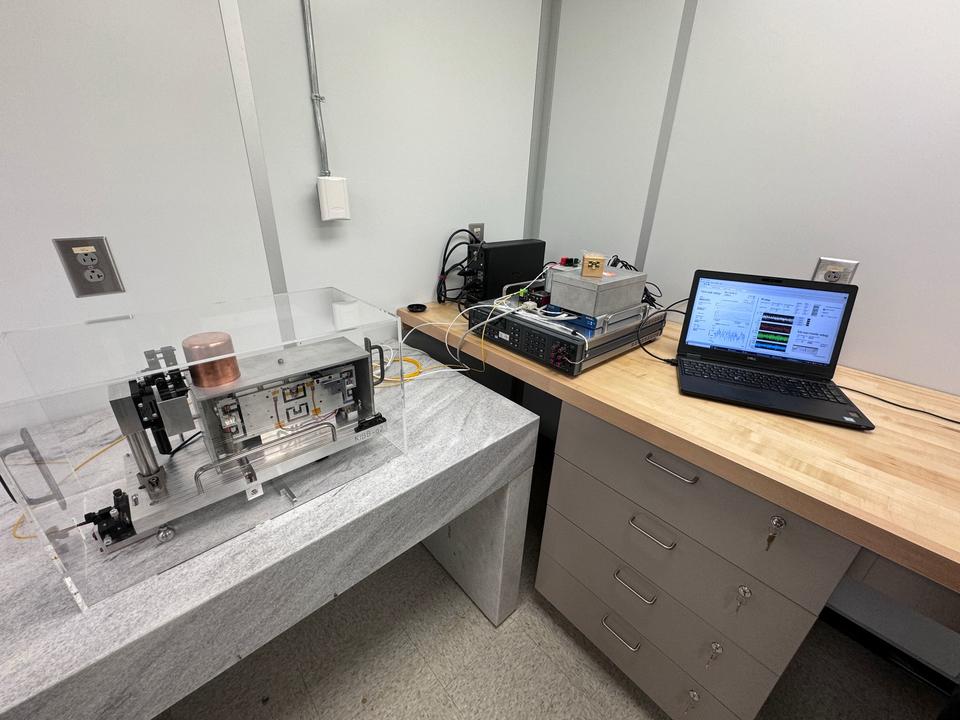Tabletop Kibble Balance: Gram-Level Mass Realization
The Technology
The 2019 redefinition of the International System of Units (SI) shifted the definition of the unit of mass, the kilogram, from a physical artifact to the fixed value of the Planck constant. In the new SI, mass measurements can now be carried out with the Kibble balance, an electromechanical device that transforms the abstract definition of the kilogram into a measurable physical quantity. These measurements are ultimately traceable to quantum electrical standards, with accuracy at the parts per hundred million (108) level.
The 1-kg Kibble balances at national metrology institutes are the size of a room, extremely expensive to build, and require technical experts to operate. However, calibration laboratories and metrology institutes are showing increasing interest in directly measuring gram-level masses using the new definition. NIST has been developing an instrument for that purpose that is much smaller, cheaper and simpler to operate: the tabletop Kibble balance.
NIST scientists initially built a proof-of-concept tabletop Kibble balance, KIBB-g1, which can realize the measurement of gram-level masses with parts per million (106) accuracy — on par with the accuracy of OIML Class E2 masses. It operates on the same physical properties as the 1-kg devices, but with a footprint of about one-quarter of a square meter excluding signal-processing electronics.

This endeavor caught the attention of the U.S. Department of Defense (DOD), which then collaborated with NIST to develop a more compact, robust second-generation instrument, KIBB-g2.0.
For KIBB-g2.0, the design was revised. The air bearing linear guidance mechanism — the largest source of uncertainty in KIBB-g1 — was replaced with a flexure-based mechanism that allows motion in only a single dimension. To measure the motion of the device’s electromagnetic coil, researchers replaced the interferometer from the first version with an optical encoder.
In April 2024, NIST delivered the first ever KIBB-g2.0 to the U.S. Army at Redstone Arsenal in Alabama, where it underwent field testing at the U.S. Army Primary Standards Lab. This instrument can directly realize mass standards from 1 mg to 20 g with ASTM Class 3 uncertainties (typically around tens of micrograms over this entire range).
This exercise was mainly intended to prove that a deployable, user-friendly, fit-for-purpose primary mass standard was possible, with the intent of modernizing the DOD’s mass metrology infrastructure. In September 2024, KIBB-g2.0 was moved from the Redstone’s primary mass lab to the facility’s less environmentally controlled calibrations lab for stress testing. This is where the instrument lives today.
In September 2024, the U.S. Army agreed to fund NIST for four more years to develop two balances to cover the full range between 1 mg and 1 kg. The plan is to optimize and update KIBB-g2.0 and additionally build a larger version known as KIBB-k1.0 to cover the mass range of 10 g-1 kg, also to ASTM Class 3 uncertainties.
In August 2025, NIST plans to deliver the upgraded, lightweight, performance-boosted KIBB-g2.2 to Redstone. NIST has formed a cooperative research-and-development agreement with an American balance manufacturing company to commercialize KIBB-g2.2.

Advantages Over Existing Methods
Traditionally, calibration laboratories have had to calibrate their mass sets by physically shipping them to primary laboratories such as NIST. This process is logistically and financially inefficient, as well as time-consuming. Within this calibration infrastructure is a convoluted dissemination chain involving the relative comparisons of artifact masses.
Gram-level mass determinations have historically been realized via subdivisions ultimately traceable to a primary kilogram standard. The further you scale away from the 1-kg benchmark, the more uncertainties you accrue along the way.
The new, fixed value of the Planck constant is scale-invariant and allows mass to be directly realized at any level, making the historical 1-kg standard no longer unique. A tabletop Kibble balance can directly realize a 1.52834-gram mass as easily as a cardinal 1.00000-gram mass. Furthermore, it allows for calibrations labs to truncate this outdated mass traceability chain and directly realize gram-level masses on site with traceability to voltage and resistance standards, and ultimately to the Planck constant.
The end goal of this project is to develop a commercial Kibble balance comparable to standard mass comparators in terms of usability, robustness, cost and size.

Key Papers
I.A. Robinson and S. Schlamminger. The watt or Kibble balance: a technique for implementing the new SI definition of the unit of mass. Metrologia. Sept. 28 2016. DOI: 10.1088/0026-1394/53/5/A46
L. Chao, F. Seifert, D. Haddad, J. Pratt, D. Newell and S. Schlamminger. The performance of the KIBB-g1 tabletop Kibble balance at NIST. Metrologia. May 14, 2020. DOI: 10.1088/1681-7575/ab507d
Y. Cao, S. Schlamminger, D. Newell, J. Hendricks, B. Goldstein and L. Chao. The design and development of the second generation tabletop Kibble balance at NIST. euspen’s 22nd International Conference Proceedings. June 2022.
Key Patents
L. Chao and J. Pratt. Absolute Mass Balance. United States Patent US 11187571B2. Nov. 30, 2021.
Related Video
Contacts
-
(301) 975-4763

